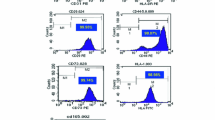Abstract
The use of Transwells™ for routine cultures of 3T3L1 cells results in a much improved rate of differentiation of fibroblasts to adipocytes (100 % in 9 of 10 tests) compared with bottom-well layer cultures. Mean size of cells was not different, but the cell number and overall cell mass was 3× larger in transwell in spite of a smaller surface area. The difference between both models was the accessibility in transwells of both sides of the cells to the medium (and oxygen). Cells were counted, and their size estimated using a handheld cell counter, Scepter™, designed for blood cells, but adjusted to the larger size of adipocytes. Finally, the effect of nitric oxide was tested using spermineNONOate, a nitric oxide (NO·) donor. The product was released to cultures at a constant 1 μl/h rate for up to 3 days using osmotic Alzet™ minipumps held in wells with water and discharging their contents to the cultured cell-laden wells through a short capillary tube. A rate of 0.3 pmol/min/ml of medium did not affect the cells’ size, but 0.4 pmol/min/ml significantly increased cell mass. The methodological improvements presented here allow for more uniform cultured cell yields and a more flexible environment for control of cell size and administration of signaling agents.

Representative microphotographs of bottom and transwell 3T3L1 cultures just before harvesting.



Similar content being viewed by others
References
Green H, Meuth M (1974) An established pre-adipose cell line and its differentiation in culture. Cell 3:127–133
Janssen OE, Hilz H (1989) Differentiation of 3T3-Ll pre-adipocytes induced by inhibitors of poly(ADP-ribose) polymerase and by related noninhibitory acids. Eur J Biochem 180:595–602
Pagano E, Calvo JC (2003) ErbB2 and EGFR are downmodulated during the differentiation of 3T3-L1 preadipocytes. J Cell Biochem 90:561–572
Hausman DB, Park HJ, Hausman GJ (2008) Isolation and culture of preadipocytes from rodent white adipose tissue. Meth Mol Biol 456:201–209
Nobusue H, Endo T, Kano K (2008) Establishment of a preadipocyte cell line derived from mature adipocytes of GFP transgenic mice and formation of adipose tissue. Cell Tissue Res 332:435–446
Zebisch K, Voigt V, Wabitsch M, Brandsch M (2012) Protocol for effective differentiation of 3T3-L1 cells to adipocytes. Anal Biochem 425:88–90
Sakata Y, Okada M, Noro A, Matsuda M (1988) Interaction of tissue type plasminogen activator and plasminogen activator inhibitor 1 on the surface of endothelial cells. J Biol Chem 263:1960–1969
Muirhead M, Schwartz RC, Waldscmidt TJ (1992) Use of a modified Transwell culture to quantitate the contribution of non IL-7 substances to grow of an IL-t dependent pre-B cell clone. Lymphokine Cytokine Res 11:167–173
Saiki A, Koide N, Watanabe F, Murano T, Miyashita Y, Shirai K (2008) Suppression of lipoprotein lipase expression in 3T3-L1 cells by inhibition of adipogenic differentiation through activation of the renin-angiotensin system. Metabolism Clin Exp 57:1093–1100
Feelisch MA (1998) The use of nitric oxide donors in pharmacological studies. Naunyn Schmiederbergs Arch Pharmacol 358:113–122
Divoux A, Clément K (2011) Architecture and the extracellular matrix: the still unappreciated components of the adipose tissue. Obesity Rev 12:e494–e503
Han J, Lee JE, Jin J, Lim JS, Oh N, Kim K, Chang SI, Shibuya M, Kim H, Koh GY (2011) The spatiotemporal development of adipose tissue. Development 138:5027–5037
Robert M, Alemany M (1981) Water compartments in the tissues of pentobarbital anesthetized rats. IRCS Med Sci 9:236–237
Struyker-Boudier HA, Smits JF (1978) The osmotic minipump: a new tool in the study of the steady-state kinetics of drug distribution and metabolism. J Pharmacy Pharmacol 0:576–578
Kavdia DD, Lewis RS (2003) Nitric oxide delivery in stagnant systems via nitric oxide donors: a mathematical model. Chem Res Toxicol 16:7–14
Srisook K, Jung NH, Kim BR, Cha YN (2005) Heme oxygenase-I-mediated partial cutoprotective effect by NO on cadmium-induced cytotoxicity in C6 rat glioma cells. Toxicol In Vitro 19:31–39
Engeli S, Boschmann M, Adams F, Franke G, Gorzelniak K, Janke J, Luft FC, Jordan J (2007) Dissociation between adipose nitric oxide synthase expression and tissue metabolism. J Clin Endocrinol Metab 92:2706–2711
Ardilouze JL, Fielding BA, Currie JM, Frayn KN, Karpe F (2004) Nitric oxide and β-adrenergic stimulation are major regulators of preprandial and postprandial subcutaneous adipose tissue blood flow in humans. Circulation 109:47–52
Gaudiot N, Jaubert AM, Charbonnier E, Sabourault D, Lacasa D, Giudicelli Y, Ribière C (1998) Modulation of white adipose tissue lipolysis by nitric oxide. J Biol Chem 273:13475–13481
Hickner RC, Kemeny G, Clark PD, Galvin VB, McIver KL, Evans CA, Carper MJ, Garry JP (2012) In vivo nitric oxide suppression of lipolysis in subcutaneous abdominal adipose tissue is greater in obese than lean women. Obesity 20:1174–1178
McGrowder D, Ragoobirsingh D, Brown P (2006) Modulation of glucose uptake in adipose tissue by nitric oxide-generating compounds. J Biosci 31:347–354
Hemmrich K, Gummersbach C, Paul NE, Goy D, Suschek CV, Kröncke KD, Pallua N (2010) Nitric oxide and downstream second messenger cGMP and cAMP enhance adipogenesis in primary human preadipocytes. Cytotherapy 12:547–553
Acknowledgments
This study was supported by grants SAF2009-11739, SAF2012-34895, and AGL2011-23635 of the Plan Nacional de Investigación of the Government of Spain.
Author information
Authors and Affiliations
Corresponding author
Rights and permissions
About this article
Cite this article
Sabater, D., Fernández-López, JA., Remesar, X. et al. The use of Transwells™ improves the rates of differentiation and growth of cultured 3T3L1 cells. Anal Bioanal Chem 405, 5605–5610 (2013). https://doi.org/10.1007/s00216-013-6970-6
Received:
Revised:
Accepted:
Published:
Issue Date:
DOI: https://doi.org/10.1007/s00216-013-6970-6




